LoftTalk Episode 2: Predictions For the Future of E-E-A-T: How Will Search Shift in the Face of AI?
By Ellie Wraith
January 4, 2024 • 10 min read

It doesn’t matter if you’re in London, Los Angeles, Manchester or Madrid. As a digital marketing maestro, you’ll likely spend many working days finding new and innovative ways to appease our elusive yet ever-present overlord.
Yes, of course, I’m talking about Google.
From managing the fallout of core updates, revised quality standards and algorithm tweaks to staying on top of never-ending shifts in consumer behaviours and cultural norms that define how search works…it’s a minefield.
Never mind keeping up with the Kardashians; we’re playing a much trickier game!
Don’t panic, though; we have a rulebook (of sorts). Google’s E-E-A-T framework sets out how individuals working in search marketing can streamline and supercharge their content to stand the best chance of ranking highly on SERPs.
But as the state of search changes, so too must E-E-A-T. The question we need to be asking, though, is how.
In this blog post, I’m inviting everyone (yes, even you) to think beyond the here and now. I’ll point you towards the future of E-E-A-T, sharing predictions for how it will change so you can keep out-ranking and out-performing your competition.
Already know who’s who and what’s what with E-E-A-T? Skip the intro and jump straight to the predictions.
A quick history of E-E-A-T
To understand the future (and even the present), we first need to ensure we have a solid grasp of what’s gone before.
We need to recap the origin story of Google’s E-E-A-T, looking at how it started and how and why it evolved.
If you’re not knee-deep in the world of SEO, you might not know that E-E-A-T began life as E-A-T.
E for expertise.
A for authoritativeness.
T for trustworthiness.
The original framework was introduced back in 2014 as part of Google’s Quality Rater Guidelines, serving to help the (yep, you’ve guessed it) Quality Raters evaluate the relevance, accuracy and utility of content on the web.
Why did Google introduce this?
Well, in a word, safety.
We know that knowledge is power. However, the wrong knowledge placed in the wrong hands has the potential to be incredibly dangerous.
Think about it this way…would you want someone pulling out your wisdom teeth after reading a set of instructions written by an amateur with zero qualifications or expertise in dentistry? Probably not.
This commitment to providing users with high-quality, hyper-relevant information, protecting them from scams, and shielding them from harmful content is what has always sat at the core of Google’s E-A-T.
Turning our attention to the present
At the end of 2022, Google added the second E to the original E-A-T framework. This E stands for experience and refers to the need to demonstrate that the author or authors of a piece of content have genuine first-hand experience in their area of expertise.
Why did Google bring this wildcard into play? Well, in classic SEO style, it sort of depends on who you ask!
For starters, we can see experience as the sum of E-A-T’s parts. By this, I mean that someone with lived experience of a given problem or with a particular product will, by default, have a certain level of relevant expertise, be able to speak with authority and, therefore, serve as a trustworthy source of information.
But really, we can go much further than this. We can see the inclusion of the second E as the first (albeit unofficial) action Google took in response to the rise of generative AI and the very real risk of unhelpful, unqualified content appearing on SERPs as a result.

Lived experience is the key differentiating factor between human and artificial intelligence, so it makes perfect sense to leverage it as the marker of reliable, credible, and trustworthy information.
Three predictions for the future of E-E-A-T
Okay, now we understand the past and the present, we can move on to the main event. Here are three predictions for how Google’s E-E-A-T will evolve in the coming months and years and advice for how you can begin re-strategising now to remain ahead of your competitors.
Prediction 1: N-E-E-A-T
Kicking things off and taking Google’s lead by throwing more letters into the mix, the first prediction is that we’ll see an N added to the quality guidelines.
This N will stand for new.
By ‘new’, I mean we’ll see Google rewarding content that:
- Presents new and innovative ideas
- Shares original perspectives and unique experiences
- Pushes existing knowledge bases further than before
Giving rise to this prediction is a belief that the buzzword generative AI is fundamentally misleading. It invites people to think that tools like ChatGPT, Bard, and Jasper can create when, in reality, they can only reproduce what’s already available.
Perhaps a more appropriate title for these tools would be transformative AI since all they’re ultimately doing is consuming, processing and regurgitating content created by others.
How to execute N-E-E-A-T in practice
Remember in school when copying your classmate’s homework was far quicker and easier than actually doing the work yourself? Sure, it didn’t need any thought, but you were at the mercy of someone else’s calculations or reasoning. The best you could do was their best, nothing more.
Executing N-E-E-A-T requires us to reject this. Sorry.
Instead, to enjoy SERP success as the landscape of search changes, you’ll need to be:
- Utilising in-house experts for their exclusive knowledge and insights on the topics you’re covering. If you don’t have them at arm’s reach, you need to go out and find them from elsewhere.
- Carrying out regular, in-depth SERP analysis to establish solid benchmarks for existing competitor content, then asking, “What can I add to what’s already available to provide further value for searchers?”.
- Putting time and effort into hyper-relevant research to set yourself apart from everyone else.
Of course, this will strain resources, so the future of search may well be a story of quality over quantity, with creators focusing on publishing fewer pieces of higher-quality content.
Prediction 2: Effort
Leading on nicely, prediction number two expands on this notion that future SERP success will demand a little bit of elbow grease, seeing a third ‘E’ added to the existing E-E-A-T framework.
This third E will stand for effort.
The increased weight placed on clear demonstrations of effort will surface as a direct, natural consequence of businesses leaning on AI for content creation.
Why? Simply put, if businesses see the rise of AI as an opportunity to make cutbacks and take shortcuts with their marketing, they are fundamentally and fatally misguided.
When we rely on AI to automate content creation in all its forms and functions, we’re demonstrating disinterest and laziness…neither of which relates to genuine expertise, authoritativeness or trustworthiness.
How to demonstrate effort
When we’re thinking about demonstrating efforts, it’s mission-critical that we understand the need for content to be satisfying (especially following the recent helpful content updates).
We must think beyond just providing users with the information they need, working to earn their attention by embracing a far more holistic approach to content creation.
In practice, this will look like:
- Including original images, illustrations, diagrams and graphical representations of data to make complex topics engaging and easier to understand.
- Creating downloadable assets – ebooks, white papers, infographics and thought leadership resources – that provide genuine added value for your users.
- Giving careful consideration to UX, appreciating how web content is much, much more than just words on a page. This will mean including accessibility features and employing information architecture best practices to aid readability.
- Finding unique insights from respected sources by conducting independent research.
Sure, this all takes time, resources, and motivation, but in the future, SERP success will be enjoyed by the sites that recognise the importance of going out of their way to exceed user expectations.
Prediction 3: Environment
Now, prediction number three keeps the same 3E-A-T framework but marks a slight shift away from AI-focused arguments.
This third E could also stand for environment.
Not following? Allow me to explain.
Most people don’t realise that all of our online activities (yes, even reading this blog post right now) contribute to our personal digital carbon footprint or that websites themselves have carbon footprints each time a user accesses its pages.
Much of these emissions lying inside Google’s control are scope 2 as they are generated by the electricity used to keep its servers and data centres in operation.
Now, Google is one of the world’s most prominent organisations, meaning it has a fairly intense amount of pressure to decarbonise and work towards net zero. To do this, Google states in its 2023 Environmental Report that reducing its scope 2 emissions will form a critical part of its efforts to reduce emissions.
Reducing the demands on data centres means running fewer routine crawls and rewarding ‘lighter’ websites, which will, in turn, catalyse significant changes for you in practice.
How to build an environmentally friendly website
Reducing the environmental impacts of a website involves making it more energy efficient. Here are some ways that you can do this in practice:
- Optimise all the visual assets on your site by compressing images and choosing the correct file formats (WebP or JPEG rather than PNG).
- Optimise code by removing any unnecessary characters from the HTML, CSS and JavaScript.
- Invest in building robust technical SEO foundations, ensuring that your site has optimal PageSpeed and Core Web Vitals.
- Improve on-page UX to make it easier and quicker for users to navigate to the information they need.
- Make content quality a priority rather than an afterthought, remembering that Google will be crawling its index less frequently, so page optimisations might not be picked up as regularly.
- Explore choosing a green web hosting provider that operates using renewable energy.
- Monitor your website’s performance using tools like PageSpeed Insights or GTmetrix to identify slow pages and optimise accordingly.
By recalibrating your approach to content creation and embracing sustainable website design principles at the outset, you can ensure you’re meeting the environmental standards that will become prerequisites for SERP success going forward.
Upshots & key takeaways
At the end of the day, looking to the future is pointless if we never turn insights into actions, making these predictions about as useful as a fork in a bowl of soup.
To stay at the top of SERPs, we can’t be chasing algorithms and implementing changes reactively. That’ll only leave us one step behind.
We need to think beyond the here and now if we’re to move ahead of the algorithms and our rivals, leaning into our humanity and giving ourselves a competitive advantage over AI’s fundamental flaws.
Ultimately, if we take these predictions on board, we’ll be creating some pretty neeeat content, and that doesn’t sound half bad, does it?










